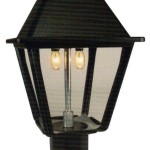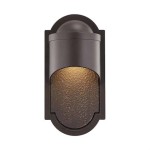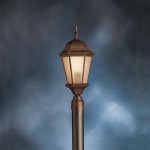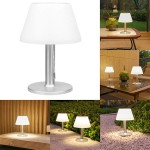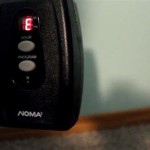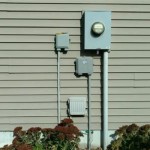How Many Lumens Is Best For An Outdoor Projector?
Outdoor projectors offer a captivating way to enjoy movies, sports, and other entertainment under the stars. However, the effectiveness of an outdoor projector is heavily reliant on the brightness it can produce, measured in lumens. Choosing the right lumen count for your outdoor projector depends on several factors, including the size of your screen, the ambient light conditions, and the intended viewing distance. This article will delve into the importance of lumens in outdoor projection, explore various lumen ranges and their suitability for different scenarios, and provide insights to help you make an informed decision.
Understanding Lumens and Their Importance
Lumens represent the total amount of light emitted by a projector. The higher the lumen count, the brighter the projected image. In outdoor settings, ambient light from the sun, streetlights, and moon can significantly impact image visibility. Therefore, choosing a projector with sufficient lumens is essential for a clear and enjoyable viewing experience.
The ideal lumen count for outdoor projectors varies based on the specific environment and desired viewing quality. If you're planning to project during the day or in brightly lit areas, you'll need a projector with significantly higher lumens compared to an evening screening in a dimly lit backyard. Additionally, screen size plays a crucial role. Larger screens require greater brightness to maintain a clear image, making higher lumen projectors more suitable.
Lumen Ranges for Outdoor Projectors
Outdoor projectors are typically categorized by their lumen range, providing a general guideline for their suitability in different conditions. Here's a breakdown of common lumen ranges and their typical applications:
1. 1,000 to 2,000 Lumens:
Projectors in this range are suitable for smaller screens (up to 80 inches) in dimly lit environments. For evening screenings with minimal ambient light, these projectors can offer a decent viewing experience. However, they may struggle to project a clear image during the day or with significant ambient light.
2. 2,000 to 3,500 Lumens:
This range offers increased brightness, making it suitable for larger screens (up to 100 inches) and slightly brighter environments. These projectors are ideal for evening screenings in backyards with some ambient light or for daytime use under a covered area with limited sunlight.
3. 3,500 to 5,000 Lumens:
Projectors in this range are well-suited for larger screens (up to 120 inches) and even brighter environments. These projectors offer a clear image even in direct sunlight, making them excellent choices for outdoor viewing during the day. They are also suitable for evening screenings with significant ambient light.
4. 5,000 Lumens and above:
These projectors boast exceptional brightness, capable of producing a clear and vibrant image even in extremely bright daylight. They are ideal for large screens (over 120 inches), outdoor movie theaters, and events where maximum visibility is crucial.
Factors to Consider Beyond Lumens
While lumen count is a critical factor, it's not the only aspect to consider when choosing an outdoor projector. Here are other essential factors to keep in mind:
1. Resolution:
Resolution refers to the clarity and sharpness of the projected image. Higher resolutions like 1080p (Full HD) and 4K offer a sharper and more detailed picture, especially for larger screens. However, higher resolutions typically require more lumens to maintain a clear image, so consider balancing resolution and brightness based on your needs.
2. Contrast Ratio:
Contrast ratio measures the difference between the darkest and brightest areas of an image, influencing the depth and detail of the projected picture. A higher contrast ratio is desirable for achieving a more realistic and immersive viewing experience.
3. Throw Ratio:
Throw ratio determines the distance between the projector and the screen needed to achieve a specific image size. A shorter throw ratio allows you to project a large image from a closer distance, while a longer throw ratio requires more space. Consider the available space and your intended screen size when evaluating throw ratio.
4. Portability and Features:
Portability is essential for outdoor projectors, especially if you plan to move them frequently. Look for projectors with compact designs, lightweight frames, and carrying cases for easy transport. Additional features like built-in speakers, Bluetooth connectivity, and smart functionalities can enhance the overall user experience.
Choosing the right lumen count for an outdoor projector is crucial for ensuring an optimal viewing experience. While the ideal lumen range will vary depending on your specific needs, understanding the factors discussed above and considering all aspects of your projector setup will help you make an informed decision. Remember to prioritize your individual requirements and budget when selecting an outdoor projector that meets your expectations.

How Many Lumens For Outdoor Mini Portable Projectors Need Benq Us

Looking For An Outdoor Daytime Projector Benq Singapore

What Are The Best Lumens For Outdoor Projector Projectors

How Many Lumens Do I Need For Outdoor Projector Wemax Official

What Are The Best Lumens For Outdoor Projector Projectors

How Many Lumens Are Needed For An Outdoor Projector Projectors

How Many Lumens For Outdoor Projector Do You Need Ninja

How Many Lumens Are Needed For Projector Easy Pick Up
How Many Lumens Do I Need For An Outdoor Projector Quora

Best Outdoor Projector To Buy For 2024 Radio Times
Related Posts
